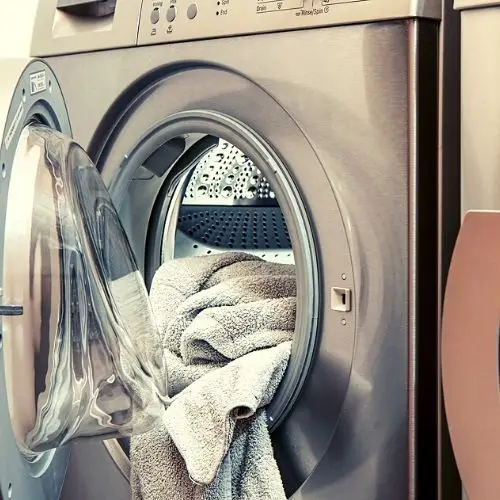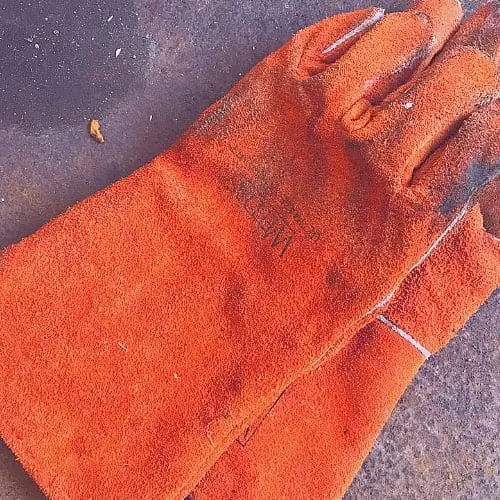
When I talk to people who have recently started in the world of welding I find one thing in common among all of them. Most of them will take good care of their welding equipment like electrodes and welders, but when it comes to taking care of their protective equipment, they slack a lot. But then again I realized there is not enough information out there about what all you need to do to take proper care. I will try to provide a brief guide about the things you need to keep in mind in this article.
Cleaning your PPE from time to time will significantly increase the life of your equipment. The cleaning technique you are going to be using will depend on the composition of your equipment. For example leather will be different than Kevlar. Similarly there will be slight differences when it comes to different equipment being considered like helmets, caps, jackets.
CAN I WASH WELDING LEATHER
Contents
One of the most common materials used in making safety gear for welding is leather, it can range anywhere from cowhide to deer hide. The cleaning and maintenance process can be a bit tricky if you don’t know how to handle leather and using the wrong technique can ruin your material. Once you know what to do, it becomes fairly easy.
Although welding leather can be cleaned using water and the process is fairly easy, you should be careful while deciding the products you are going to be using. For example, don’t ever use a normal detergent or fabric cleaning on leather items, it will ruin their durability and quality.
On the other hand, make sure you have a mild moisturizing soap or even saddle soap which is commonly used in washing saddles on horsebacks. You should also go for a moisturizer that can be used after the washing to keep the material soft.
I will walk you through the step-by-step guide of washing leather equipment later on but till that point keep this one thing in mind. Any safety equipment especially if it is something you are wearing will keep getting dirty and it might even start smelling a lot. Hot burning metal particles land on your gloves or jackets and the smell of burning leather can be very bad.
With all of these factors, you might feel like washing your gloves or jackets, or blankets every other day but you should only wash them once in a while. Leather is not a material that should be washed regularly.
CAN I CLEAN MY LEATHER GLOVES WITHOUT WASHING?
Yes.
You can clean the leather gloves or any leather protective equipment without necessarily washing them with soap and water. An oil based cleaner or degreaser works well. For most effective results, using a little soap and water does help. I am going to be taking the example of a glove for the different methods of cleaning but these apply broadly to other leather equipment as well.
If your gloves are not that dirty, if there is only a layer of dirt on them then you don’t have to use water, a simple dusting off using a rag cloth will do the job.
But on the other hand, if your gloves have some stains or burn marks then I would recommend using a bit of water. You don’t really have to ‘wash’ them but using a damp cloth to gently scrub them will do the job. You can try using saddle soap or other mild soaps to rinse off the stains if they are stubborn.
One thing to keep in mind is that if your gloves are damp don’t ever squeeze them to remove the water, this will deform them and ruin the leather. What you can do is to use a dry cloth or soak off the water and then leave them out to dry.
You should also try to wear them a couple of times during the drying phase, this will make the gloves conform to the shape of your hands better. Let the gloves air dry and don’t use a hairdryer at any cost.

CAN YOU WASH A WELDING JACKET?
You can clean a welding jacket using water and saddle soap but I wouldn’t recommend washing them in a washing machine. Usually, welding jackets are made up of heavier leather when compared to normal leather jackets. This makes the jackets more rough and tough. I mentioned before about having three ingredients for cleaning your jacket, saddle soap or other mild moisturizing soap, conditioner, and cleaning rags. Let’s take a look at the step-by-step guide for cleaning your jacket.
The first step would be to dampen the cleaning cloth and squeeze it once to make it just damp enough. Once you have done this, put a few drops of the cleaning soap on the rag and make sure that the soap has been mixed well with the rag.
You will also need another cleaning rag that has not been mixed with soap but is barely damp, this will be used to rinse off the soap once the cleaning has been finished. Make sure you start scrubbing the jacket with the soapy cloth first, don’t be too harsh but if the stains are not going away you might need to put some effort into it.
Once the stains have been removed and that area of the jacket is cleaned, rinse that area with the other damp cloth. After the entire jacket is cleaned apply the moisturizer and leave it to dry off. This step is important as it will keep the jacket soft and comfortable while wearing.
It is not recommended that you dump your leather jacket in the washing machine with the rest of your clothes. Keep in mind that your everyday clothes will be much softer and the leather might get ruined in the process.
I have read some blogs out there which say that you can wash the jacket in the machine but I would highly recommend you not to do it.
CAN YOU WASH WELDING CAPS?
Handling welding caps is a bit different when compared to other equipment out there. The main reason for this being its composition. It is made up of 100% cotton usually.
Note: don’t buy welding caps if they have any synthetic fibers, they have a tendency to stick to your skin when working.
Because most of the caps are 100% cotton, you can simply wash them in your machine. I would still recommend using a milder detergent.
But one issue that a lot of people face is the shrinkage of the caps. If your caps are fitting you perfectly they might become small after a couple of washes. There are ways you can avoid this. Like using cold water while washing and then letting them air dry. If you are in a hurry you can try using a dryer but at the cold setting.
HOW TO CLEAN WELDING HELMETS?
Cleaning welding helmets have to be divided into components. The first being the general regions then the nooks and difficult to reach areas and then the lens. When you are targeting the general area you can simply use a rag and any furniture detergent, a lot of them come in sprays which would be easier to use.
Make sure to check the manufacturer’s website to see if there is any special recommendation for that particular helmet. The general areas will be cleaned easily by simply wiping the surface. But when you are targeting the difficult to reach areas I would recommend switching to a brush.
Make sure to rinse off the detergent after cleaning.
Cleaning the lens has a different method, especially if it is really dirty due to the debris and other particles. You will have to use a buffing compound and wheel to remove the fog collected on the lens or replace it altogether.
All you have to do is to apply the compound and switch on the buffing wheel while moving it in a sideways position. Also, make sure you are not pressing too hard on the lens as it can lead to some scratches.
TAKING PROPER CARE OF OTHER PROTECTIVE GEAR:
WELDING BLANKETS
Another popular piece of equipment that a lot of people use is the welding blanket. They are usually composed of three types of material, leather, fiberglass, and felt.
If you have the leather blanket, it can be cleaned in a similar way to a welding jacket or gloves. While dealing with fiberglass and felt material, keep in mind that while washing them don’t use water that is above 40 degrees Celsius or 100 degrees Fahrenheit. Use a detergent that is non-ionic or free of any bleach.
And don’t ever oversoak it, if you soak it for too long the outer protective layer can be ruined. The best way would be to clean it by hand using a damp cloth. In a similar way to leather jackets.
Keep in mind to not put it into a machine along with your regular clothes.
WELDING BOOTS
There are multiple ways of cleaning your welding boots, starting with using nail polish remover. You can put a few drops of it on a piece of cloth or cotton and give the boots a wipe. As a finishing touch apply a bit of baby powder.
If the boots are not extremely dirty you can even use a bit of petroleum jelly or even water to wipe off the dirt. When using jelly, remember to give the surface a wipe with a damp cloth.
If there are stains that are getting difficult to remove, I would recommend giving a wet brush a try. On the other hand, if your boots are leather-based, then go for a leather polish while cleaning.
After cleaning you can even apply a protective coat to the boots. There are a lot of sprays out there that can prolong the life of your boots.
PPE MADE OUT OF KEVLAR
If you are using gear made out of Kevlar then according to the company here you should keep the following points in mind. the recommended time and temperature for washing Kevlar equipment is at 170 degrees F roughly for about 15 minutes. The company states to not wash with water above 400 degrees F.
Also avoid using any detergents which has bleach or chemicals which have chlorine in them and try to use commercial laundry soaps.
APRONS, SHIRTS AND SLEEVES
The process for aprons and shirts is pretty similar to that of caps or jackets, you just have to keep in mind the composition of the equipment. Also, it would be a good idea to talk to the manufacturer’s support or read about the recommended way of cleaning them on their site.
CONCLUSION
To sum it all up, it is very important to regularly check the condition of the PPE kit you are wearing because of the safety hazards. Cleaning them from time to time can prolong the life and comfort of the equipment you are using. Keep in mind to use a mild detergent or saddle soap when you are dealing with leather materials. Remember to correctly dry the caps or buy one size large in case they shrink after a few washes. Recommended water temperature is the most crucial part to get right while washing or cleaning any of the equipment.
As an addition, I would encourage you to read my post about why welders starch their clothes here.
